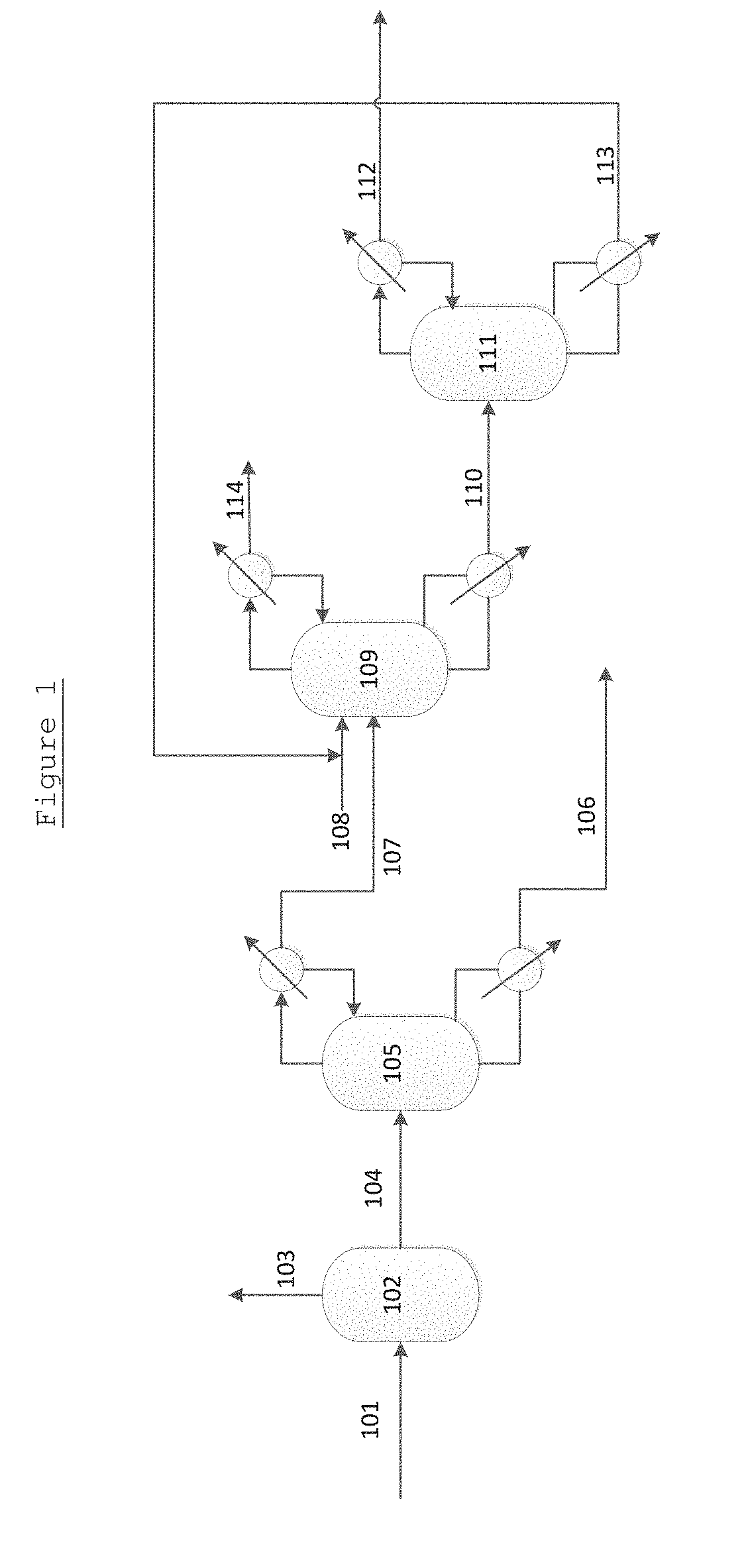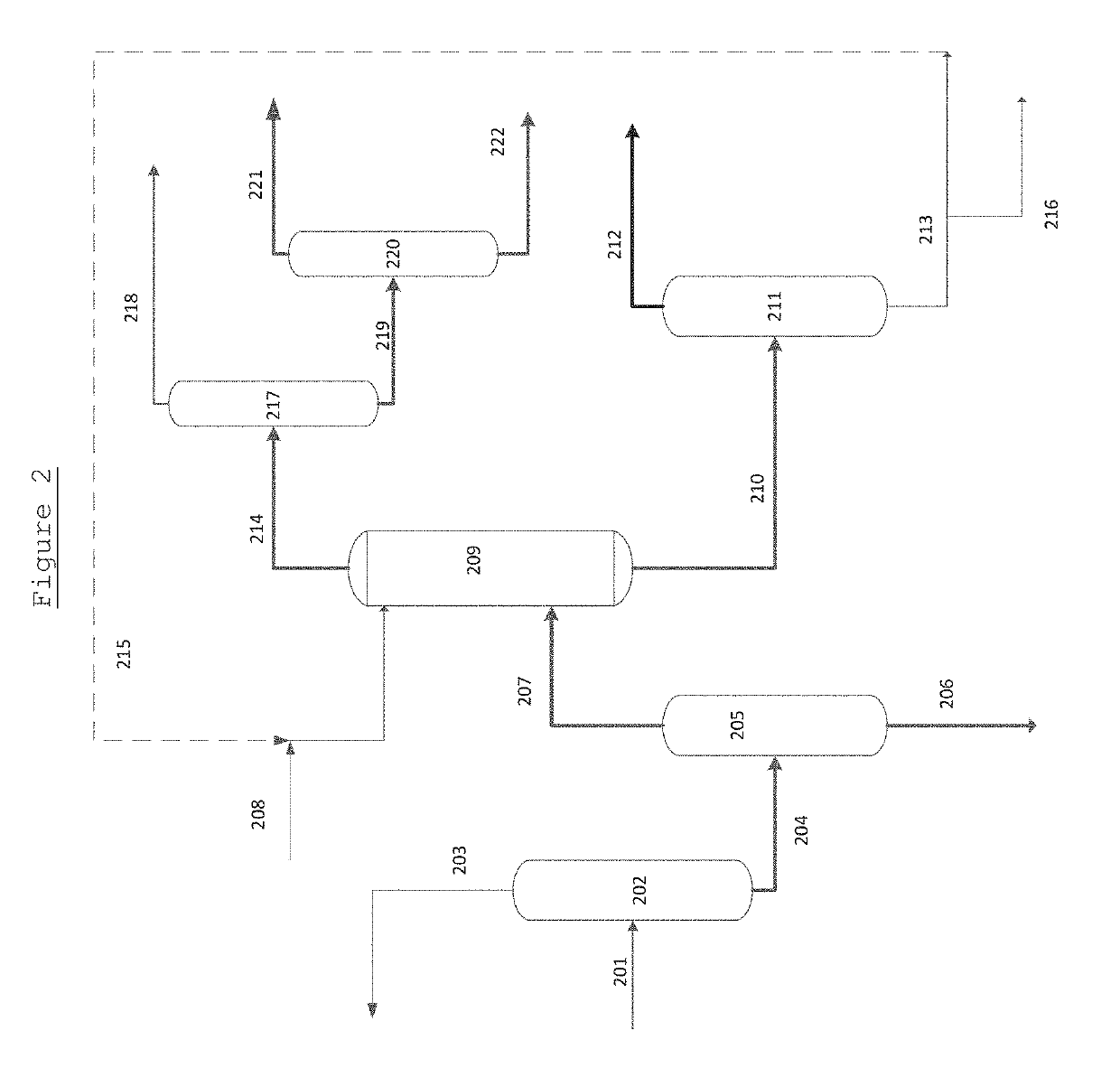Process for the separation of glycols
- Summary
- Abstract
- Description
- Claims
- Application Information
AI Technical Summary
Benefits of technology
Problems solved by technology
Method used
Image
Examples
example 1
[0074]Experimental basic data measurements were taken for the vapour-liquid-equilibrium for the ternary system comprising MEG, 12-BDO and Glycerol. Data points were measured at low / vacuum pressures and different compositions.
[0075]Aspen Plus software was used to model the process as shown in FIG. 1. A thermodynamic package was used. Said package resulted from fitting of the experimental basic data (VLE) measured for the mixtures considered.
[0076]Examples were then generated from Aspen Plus using glycerol as the extractant (entrainer) and feed mixtures with different MEG / 1,2-BDO weight ratios and glycerol / MEG mixture weight ratios.
[0077]In each example, the MEG mixture is fed to the second (extractive) distillation column 109 at about the middle of its height. The glycerol feed 108 location is at the upper part of the column (first stages). The results for the second (extractive) distillation column 109 are shown in Tables 1 to 4, below.
[0078]The results for the third distillation (s...
example 2
[0082]Aspen Plus software was used to model the process as shown in FIG. 1. A thermodynamic package was used. Said package resulted from fitting of experimental basic data of the vapour pressure curves for the individual components and the vapour-liquid equilibrium (VLE) measured for mixtures of those components.
[0083]Examples were then generated from Aspen Plus using glycerol as the extractant (entrainer) and feed mixtures with different MPG / other glycols weight ratios and glycerol / MPG mixture weight ratios, to exemplify the separation and purification of a glycol with 3 carbon atoms, in this case MPG. For this application, the separation of MPG from close boilers as 2,3-Pentanediol species is a challenge since those glycols form close-boiling point azeotropes when compared to the pure components.
[0084]In each case, the MPG mixture is fed first to a first distillation column 105 in which the heavy components are removed. The results of this distillation are exemplified in Table 5. ...
PUM
| Property | Measurement | Unit |
|---|---|---|
| Temperature | aaaaa | aaaaa |
| Pressure | aaaaa | aaaaa |
| Fraction | aaaaa | aaaaa |
Abstract
Description
Claims
Application Information
 Login to View More
Login to View More - R&D Engineer
- R&D Manager
- IP Professional
- Industry Leading Data Capabilities
- Powerful AI technology
- Patent DNA Extraction
Browse by: Latest US Patents, China's latest patents, Technical Efficacy Thesaurus, Application Domain, Technology Topic, Popular Technical Reports.
© 2024 PatSnap. All rights reserved.Legal|Privacy policy|Modern Slavery Act Transparency Statement|Sitemap|About US| Contact US: help@patsnap.com









